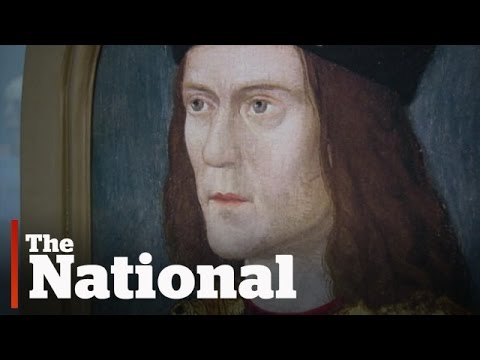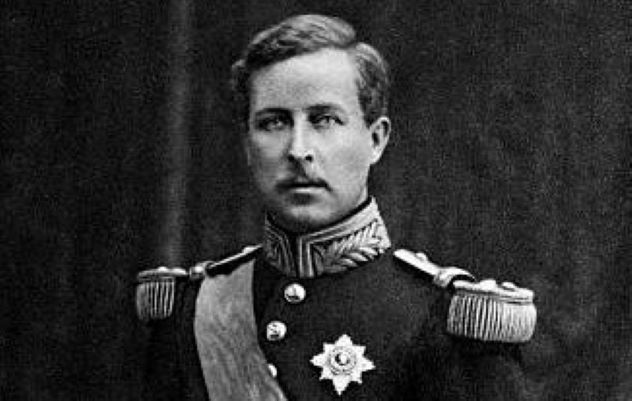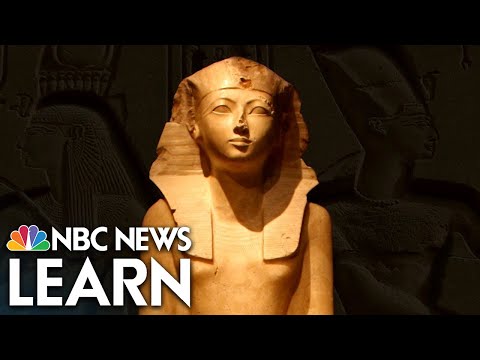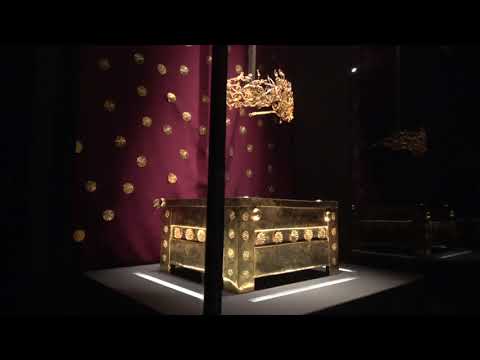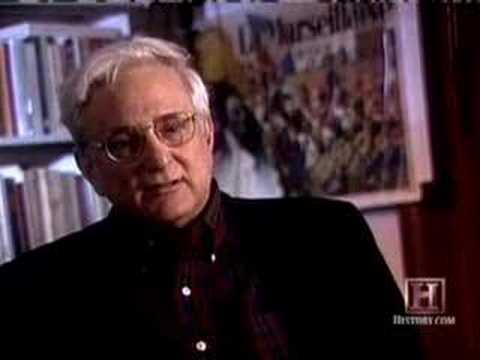Here are ten mysteries about royalty that have been put to rest through the application of science.
10 The Romanovs
The Romanov family ruled the vast domains of Russia for three centuries as autocratic monarchs. Few royal families in Europe enjoyed as much luxury and power as the Romanovs. In 1917 however, the whole facade of their authority crumbled. Losses in the First World War and a desire for change saw Tsar Nicholas II forced to abdicate. With his family, he was captured by Bolsheviks and moved to a secure location in Yekaterinburg. There they disappeared from sight in 1918. Watch this video on YouTube At first, the Soviet leadership announced that Nicholas II was executed, but it remained unclear what had happened to the rest of the royal family. This led to confusion as to whether any of them had survived. Several people even came forward claiming to be the missing members of the Romanov family. In 1991 the missing remains of several members of the royal family were uncovered. By studying the DNA, researchers were able to confirm that they were related, but they needed to examine other relations to prove they were the Romanovs. DNA samples were taken from other royals, including Britain’s Prince Philip—a grand nephew of Alexandra Romanov—that positively identified most members of the missing family. Intriguingly, however, the bodies of the heir to the throne Alexei and his sister Anastasia were not found.[1]
9 Anastasia
Of the people claiming to be a surviving Romanov, none was more famous than Anna Anderson. In 1920 a young woman attempted to commit suicide by leaping into a canal in Berlin. Pulled to safety and taken to a hospital, the woman refused to identify herself, and so she was admitted as “Miss Unknown.” Watch this video on YouTube A fellow patient at the hospital claimed that the unknown woman was Tatiana, one of the missing Russian princesses, but those who knew the royal family did not think she looked like the girl they had known. Other Russians began to believe that the unknown woman just might be the missing Princess Anastasia, however. She took the name Anna Anderson. While some continued to think she was Anastasia, others declared “categorically that she is not Anastasia Nicolaievna, but just an adventuress, a sick hysteric and a frightful playactress.” Over the following decades, Anna Anderson pressed her rights to portions of the Romanov fortune in various lawsuits but never managed to convince everyone that she was the missing princess. The mystery was only definitively solved after her death. With the recovery of the bodies of the Romanovs, DNA comparisons were made and proved that Anna Anderson was not related to them. In fact, she was identified as a Polish factory worker named Franziska Schanzkowska. In 2007, two more bodies were discovered that had Romanov DNA. All the missing Russian royals were, therefore, accounted for.[2]
8 Richard III
There is no English king with a more villainous reputation than Richard III. According to his enemies, he came to the throne by murdering his nephews, the true heirs to the throne, known as the Princes in the Tower. The young Edward V disappeared when he was just 12 years old, allowing his uncle Richard to become king. Richard III’s reign was itself a short one. He met his end at the Battle of Bosworth Field against the rival claimant to the throne, Henry Tudor. Richard was defeated and killed. The only clues to what happened to Richard were references to how his corpse was treated after the battle. “His body… (as tradition hath delivered) was borne out of the City, and contemptuously bestowed under the end of Bow-Bridge.” Historians thought they had identified a potential burial site in the city of Leicester but excavating the whole area was beyond their resources. They decided to dig up just 1% of the site in search of Richard III’s grave. Incredibly, on the first day, bones were discovered, and DNA later confirmed them to be the lost king. By examining the bones, it was found that Richard III was not a hunchback as some enemies portrayed him, though he did have scoliosis. While they could not tell which wound killed him, his body was badly mutilated around the time of his death.[3]
7 Delphine Boël
Not all royal mysteries are ancient. Some involve people who are very much alive. For example, in 1999, a Belgian teenager published an unauthorized biography of Queen Paola of Belgium that hinted that King Albert II of Belgium had fathered an illegitimate daughter several decades earlier. Soon the press identified Delphine Boël as this potential daughter. In a message to the Belgians, the king made what seemed to be an oblique reference to these claims. “The Queen and I remember very happy times, but also the crisis that we experienced more than 30 years ago. Together we could, over a long time, overcome those difficulties and recover a deep understanding and love for each other. This period was recalled to us recently. We don’t wish to dwell on that subject which belongs to our private lives.” Yet, he refused to confirm the rumors. When Delphine decided to confirm her paternity, it took a court order to convince Albert II to provide a DNA sample. For every day that he refused to give one, he would be fined €5,000. This sample proved that Delphine was his daughter and gave her the right to call herself a Princess of Belgium. Today she is known as Her Royal Highness Princess Delphine Michèle Anne Marie Ghislaine de Saxe-Cobourg.[4]
6 Albert I’s Death
Albert II of Belgium was not the only Belgian king to have a mystery associated with him. Albert I of Belgium was a keen climber, and in 1934 he set out alone to scale a rock-face in the Ardennes region. His body was later found dangling from a rope. While this seemed like an obvious accident, rumors began to swirl that the king had been murdered or committed suicide somewhere else, and the body moved to make it look like a simple fall while climbing. Some even claimed that the king’s body was never even where it was said to have been discovered. Part of the problem with confirming what had happened was that people descended on the site in great numbers—some of them taking away souvenirs that might have helped an investigation. Many took away blood-soaked leaves. But these have been used to confirm that Albert I was found where officials claimed. These grisly souvenirs were DNA tested, and the blood on them was confirmed to be that of the king. Despite being severely far-sighted, the king was an expert climber. It seems that Albert I simply slipped and hit his head, depositing the blood that was snatched up by locals.[5]
5 Hatshepsut
Hatshepsut was only the second female pharaoh to sit on the throne of Egypt. After the death of her husband in 1479 BC, she ruled as regent for his son, but because of her royal blood, she effectively became the ruling pharaoh. In statues and inscriptions, she is shown with all the regalia of a pharaoh, including the ceremonial beard. After ruling Egypt for 20 years, Hatshepsut died, and her successor, Thutmose III, the son of Hatshepsut’s dead husband, took steps to destroy Hatshepsut’s legacy. Inscriptions that mentioned her were chiseled out and statues with her image toppled. While Hatshepsut’s tomb had been discovered, her mummy was missing. Was this another part of the attempts to erase her from history? Howard Carter discovered a small tomb with two female mummies in it in 1903. One of the bodies belonged to Sitre-In, the woman who had been Hatshepsut’s wet nurse. The other had no identifying marks. But a tooth had earlier been discovered in a box containing organs from Hatshepsut. By comparing this tooth to the unidentified mummy’s jaw, it was possible to positively identify the mummy as that of one of ancient Egypt’s most fascinating rulers. Why her body was removed from her own sarcophagus, however, remains a mystery.[6]
4 Philip of Macedon’s Tombs
Philip II of Macedon was one of the greatest military leaders of ancient Greece. Today, he would be a household name if he had not fathered an even greater conqueror—Alexander the Great. In 1977, some of the royal tombs of Macedon were excavated, and one of them was thought to be the tomb of Philip II. All of the tombs were filled with splendid artifacts of incredible value, but it was uncertain which, if any, belonged to Philip II. However, a recent examination of the bodies found has suggested that the bones of Philip have finally been identified. Despite being an excellent general, Philip was injured several times during his career. At one siege, he lost his right eye. In another, his lower right leg was badly wounded. When the bones of the man found in one tomb were looked at, they showed massive damage to the right knee that caused the leg bones to fuse. The age of the bones also suggests these are the bones of King Philip. The tomb of Alexander the Great remains one of the most tantalizing archaeological discoveries waiting to be found.[7]
3 Eadgyth
The oldest confirmed remains of a British royal belong to Eadgyth, daughter of King Edward the Elder and granddaughter to King Alfred the Great, who died in 946 AD. Eadgyth was sent to Germany and married the Holy Roman Emperor Otto I. Eadgyth died in her thirties and was mourned by her husband. Yet what happened to her body was something of an open question. In 2008, a sarcophagus was dug up in Magdeburg Cathedral. Inside were the partial remains of a woman and an inscription that these were the bones of Eadgyth, having been reburied in 1510. DNA testing was impossible, so researchers had to look at other indicators to confirm these were Eadgyth’s bones. The bones were found to be from a woman in her thirties, and wear on them showed she was a horse rider—placing her among the upper classes. By analyzing the isotopes in the enamel on the teeth in the coffin, they found that this lady had grown up in Wessex, as Eadgyth had. Further work showed that Eadgyth had eaten a diet rich in fish and meat, something only a wealthy person could do. Having almost certainly identified Eadgyth, she was reburied in a titanium coffin, hopefully, to rest in peace.[8]
2 Tutankhamun’s Death
No pharaoh of Egypt has more name recognition than Tutankhamun. This is not because of any famous deeds attributed to his life but rather the spectacular nature of the tomb he was found in. When Howard Carter opened Tutankhamun’s tomb in 1922, he peered inside and saw “wonderful things.” Vast numbers of golden objects were discovered that revealed the magnificence of an undisturbed royal tomb. Watch this video on YouTube Yet, the body of Tutankhamun revealed a number of mysteries. The king had died young, and bone fragments seen on an x-ray suggested to some that he had died of a head wound. This gave rise to the theory that Tutankhamun had been attacked and murdered. Recent scans have suggested another theory. Tutankhamun’s remains are in a bad state of preservation because when the body was first found, it was glued in place by the resins used to embalm it. Carter and others had broken many of Tutankhamun’s bones to free the gold mask over its head. But CT scans have revealed that one of the bone breaks, that on his leg, were made just before Tutankhamun died. It seems likely that the young king suffered an accident that shattered his leg and caused an infection that killed him.[9]
1 Louis XVII
The French Revolution saw the destruction of the royal family of France. King Louis XVI and his queen Marie-Antoinette were both executed by guillotine, but they were not the only royals. Their young son Louis was heir to the throne, and this left the revolutionaries in a quandary. If they left him alive, he could claim the throne as King Louis XVII. On the other hand, if they killed a young child, they would be seen as barbarous. So instead, they locked Louis up alone in a prison cell and left him to die in horrible conditions. After two years in prison, the handsome young boy was a mass of sores and had a distended stomach from malnutrition. A doctor was called but far too late, and the prince died. A quick autopsy was carried out, but the body was hurried into a mass grave, and the revolutionaries hoped that would be the end of the story. Unfortunately, without a clearly identified body, over 100 pretenders popped up across the world, all claiming the French throne. Fortunately, the doctor who performed the autopsy stole the heart from the prince’s body. This shriveled relic was stolen and passed down through the years until it was returned to surviving members of the Bourbon family and placed in the royal crypt in Paris. A small piece of this heart was sawn off and used to confirm that it belonged to Prince Louis. This confirmation was possible because a strand of his mother Marie-Antoinette’s hair had been preserved in a necklace.[10]


